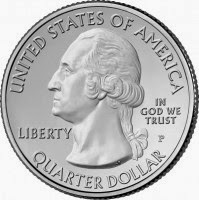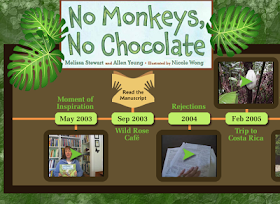This week, I went back to high school. I was part of a STEM (Science,
Technology, Engineering, and Math) panel for career day. The other two members
on the panel were nuclear engineers, having just graduated from college last
year. We had seven sessions, so I listened to their presentation seven times.
And, I still couldn’t tell you what a nuclear engineer does. At the very least,
there is no way that I could explain it to a group of teenagers. My left brain
almost exploded.
.jpg) |
| STEM Presentation Panel- with 2 Nuclear Engineers |
My author presentation audience is usually elementary and
middle school students, and 40-45 minutes long with about a 15-minute question
period. For this high school crowd, I had to shorten it to less than 10 minutes
and tailor it more towards STEM. And, present 7 times, once every half
hour.
The high school students seemed very interested in
engineering fields --- even asking very complicated questions about nuclear engineering,
which showed me that they understood the material presented to them. If these
are the hands and minds that will create the future, then it looks like we are
in great shape.
I love this quote:
“If we’re going to out-innovate and out-educate the rest of
the world, we’ve got to open doors for everyone. We need all hands on deck, and
that means clearing hurdles for women and girls as they navigate careers in
science, technology, engineering, and math.”
With all the media attention that has been given to
engineering, I thought I’d share a part of my introduction to the Engineering
chapter from Women of Steel and Stone here to explain the engineering field and
the current statistics, and also mention the different areas.
Soon, I will have PDF handouts of the introductory chapter
on my website for teachers, librarians, and students. The handout will explain
all 12 of the engineering categories and the disciplines, and the top
engineering schools at the moment.
from Women of Steel and Stone: 22 Inspirational Architects, Engineers, and Landscape Engineers, Chicago Review Press, Jan 2014
Today, engineers apply scientific, mathematical, economic, social, and practical knowledge to design and build structures, machines, devices, systems, materials, and processes. There are 25 different engineering and engineering technology majors offered in American universities.
Engineering used to be dominated by men, and though the statistics are getting better, there is still a long way to go. The National Science Foundation’s Women, Minorities, and Persons with Disabilities in Science and Engineering report reveals that in 2008, 41 percent of male incoming college students planned to major in science and engineering, compared to 30 percent of incoming female students. In 2010, the numbers remained similar: 44 percent of men and 33 percent of women planned to major in the sciences. In biology and social and behavioral sciences, there are more women enrolled than men; whereas in engineering, physics, and computer science, men greatly outnumber the women.
In addition, the Congressional Commission on the Advancement of Women and Minorities in Science Engineering and Technology Development reported in September 2000 that women are about twice as likely as their male colleagues to leave the engineering workforce after a few years (25 percent compared with 12 percent). Of the 60 to 80 students who take professor Angela Bielefeldt’s civil engineering class at the University of Colorado at Boulder, she says, only 10 to 12 are generally women.
While master’s degrees in engineering awarded to women hovered at 22.6 percent in 2010, a slight dip from 2008 and 2009 levels, bachelor’s degrees in the engineering field among women climbed to 18.1 percent, and more engineering doctorates—22.9 percent—were awarded to women than any time in the past, according to the American Society for Engineering Education.
With a rapidly growing population and aging infrastructure, our nation needs all our creative and technical minds, male and female. As the pioneers in these pages prove, women can build too.
Engineering and Engineering Technology College Majors
The National Academy of Engineering has organized 12 engineering categories. Members are required to select a primary and, if needed, secondary affiliations. The scope of each discipline incorporates a diverse area of work.
Four main disciplines account
for two-thirds of the degrees handed out each year: civil, computer,
electrical, and mechanical engineering. The next four disciplines account for
one-fifth of all degrees handed out each year: aerospace, biomedical, chemical,
and industrial/manufacturing engineering. Fewer than 10 percent of engineering
degrees handed out each year include those in agricultural, architectural,
engineering management, engineering physics/engineering science, environmental,
general engineering studies, materials, mining, nuclear, and petroleum
engineering.











